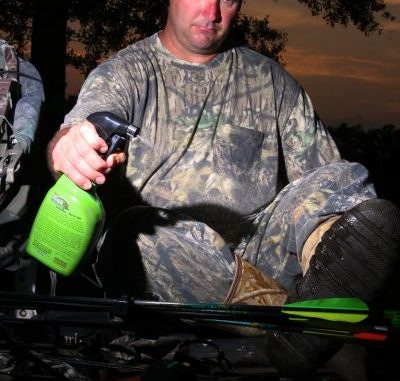
Although he admits that it’s hard to stay focused on a deer while perched in a tree when he knows the fish are biting out his back door in Lafitte, New Orleans Style Fishing Charters owner Capt. Jason Shilling gets in a little bow hunting during early October before buckling down on the deer later in the year.
“I try to get out opening weekend,” Shilling said. “It’s mainly to get the jitters out, and then I go back to fishing for another month or two. I bow hunt all over the country, so opening weekend is more about me listening to the call of the wild rather than me trying to kill a monster buck.”
Nevertheless, Shilling takes the opening weekend of the Louisiana bow season as seriously as he does hunting rutting bucks in Nebraska. That means wherever he sets his bow stand, it’s been given just as much thought and consideration as if he were hunting out of state.
“In early season, there’s still a lot of foliage on the trees, and deer like to take the path of least resistance,” Shilling pointed out. “They want easy access down a trail that doesn’t present a lot of obstacles. This time of year, they stick with the same trails in and out of their bedding areas because there isn’t any human presence in the woods.”
And Shilling insists that, at least where he hunts, deer are going to use the same trails during October as they used in August. That means he can have confidence that wherever he sets his stand this month will be just as good a spot two months later.
“Deer don’t change their patterns until something makes them change their patterns,” Shilling explained. “That something is usually the presence of deer hunters in the woods. But if you can get in and get out in one August weekend, that’s not going to have nearly as much effect as it would if you kept looking around for a whole week during late September.”
Shilling sprays down with scent killer and goes out searching for heavily used trails by walking the perimeter of a field and looking for spots along fence lines where deer are crossing. Likely areas that present a path of least resistance include breaks in the fence, gullies under the fence or trees down on a fence.
One of Shilling’s most-productive bow stand setups has been overlooking timber points extending out into a field. Realizing that deer still in their summer coats are going to feed primarily at night, he has discovered that they like to stage back around the corners of the points while waiting for the sun to go down.
“I find a spot where I can see both corners of that point,” Shilling explained. “If I can see both those spots, then I’m going to see deer early enough to shoot one. And if I can find a point with another point across the field from it, then I know I’m in a good spot because they’re going to hit that other point on their way out of the field.”
With thick leaves still on trees and underbrush still tough to penetrate, deer are going to find the easiest path to walk because they don’t want to expend a lot of energy finding a new path.
And if you can find a good spot to hang a stand on one of these paths of least resistance, Shilling believes you should have no trouble seeing deer.


